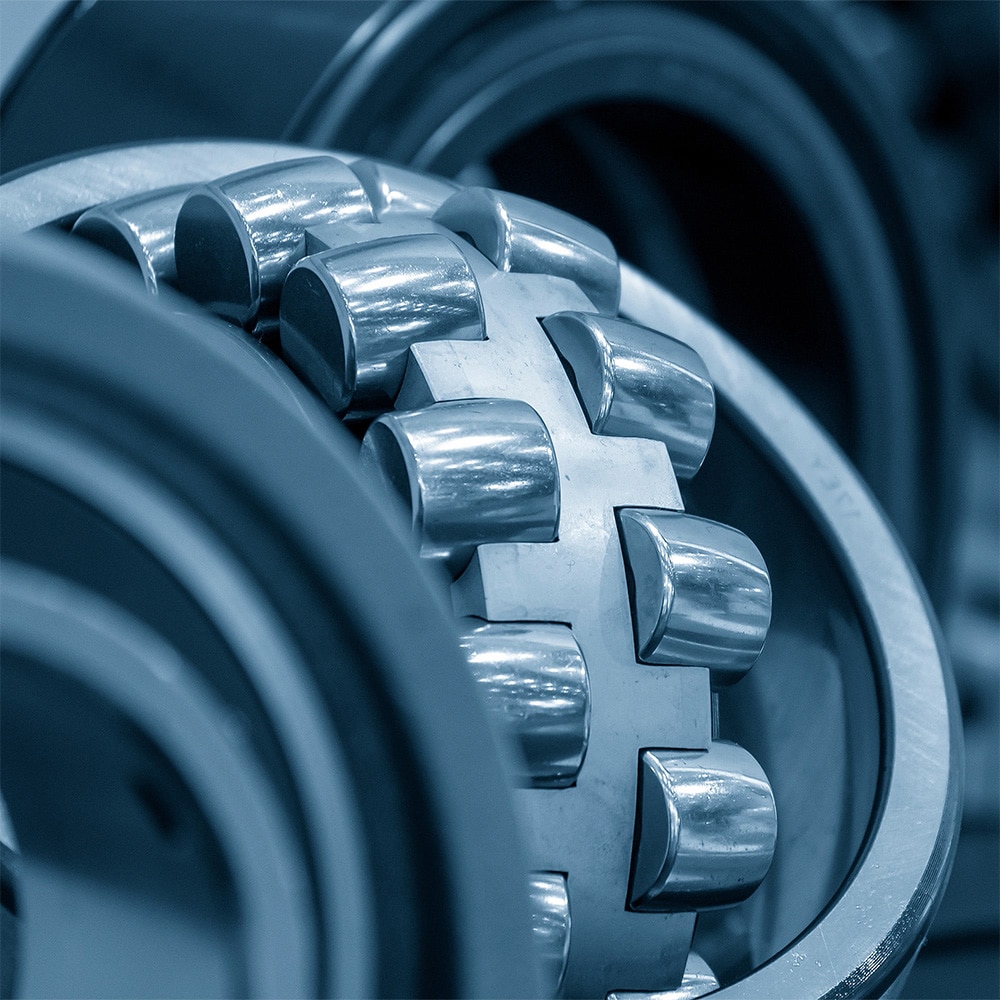
Chromium coatings are proven to protect metal tools, instruments, and machines. They do this by counteracting the four primary forces that can lead to metal failure: corrosion, contact fatigue, erosion, and abrasion.
With abrasion and mechanical wear specifically, advanced coatings greatly reduce friction between two surfaces that are in contact with one another. In fact, chromium coatings are so effective that, in many cases, the solvents and oils that might typically be in use to enable the surfaces to glide are unnecessary.
How is that possible? Micro-nodularity is the key physical characteristic. The Oxford Dictionary defines a nodule as “a small, rounded lump of matter distinct from its surroundings.” A substance that exhibits micro-nodularity is one with many protruding bumps.
To quickly understand the effect that micro-nodularity creates between two surfaces, simply imagine a chair on wheels versus a chair not on wheels. The chair on wheels will be able to move and glide along the floor with ease and without much damage to the floor or the wheels. The chair without wheels, well, dragging it along the floor will not only scuff the floor quite a bit, but it will also cause damage to the feet of the chair.
In essence, the microscopic nodularity found with Armoloy chromium coatings greatly reduces the amount of surface area that the coated item has in common with any surface it comes in contact with. And less surface area means less friction and less “grip.” Having a micro-nodular surface coating is also an ideal for lubrication retention.
Reduce Friction by Design
Armoloy TDC and XADC chromium coatings are highly effective at decreasing the friction between one surface and another, regardless of the coating application time. In many instances, a non-coated metal tool, device, or piece of equipment can have a layer of chromium applied and thereafter glide much more smoothly over other surfaces.
And because the layer is so thin, the item’s technical specifications have virtually no change. In other words, an item’s functionality shows no impairment by the addition of the chromium material.
However, rather than putting an item into service only to later pull it out of service during coating, many companies will incorporate the coating into their product design and choose material application during or immediately after the manufacturing process. That way there is no interruption in the use of the item.
Saying Goodbye to Abrasion
Greatly reducing the friction—and, by extension, the abrasion—experienced by tools and equipment as they rub against other surfaces (or their own opposing surfaces, in many cases) produces several important benefits. For one thing, metal assets work effectively for longer periods of time and also last longer in general. That means less money spent on repairs and replacements.
In machines, chromium coatings help surfaces glide over one another, so less maintenance is necessary. And, as for tools, the coating enables a machine to function as designed for longer, which means less time and effort recalibrating, recertifying, etc.
Then, of course, there is the customer relations benefit that comes from people seeing clean, intact surfaces on company’s tools and equipment rather than abraded, corroded, eroded, or otherwise damaged surfaces. The confidence this instills in customers is important, as is the fact that it can make them more likely to refer their peers to the company they are working with.
Advanced Science. Simple Solution.
Given all the benefits that chromium coatings provide, it would be understandable for people to assume that the coating process is complex, costly, or both. But the reality is that while the science behind the coatings is very advanced, the process for applying the material to metal assets is fairly simple.
It is also very precise. The chromium is only applied to the specified surfaces. Plus, the coating is essentially impervious to the variety of forces it faces. It will not flake, chip, or peel from the base material. Consequently, it is safe for many uses including food and medical applications.
Armoloy applications engineers immerse themselves in a customer’s processes to be sure they fully understand the challenges faced and the opportunities for improvement. Then these coating experts propose an approach for maximizing the protection of a company’s valuable metal assets.